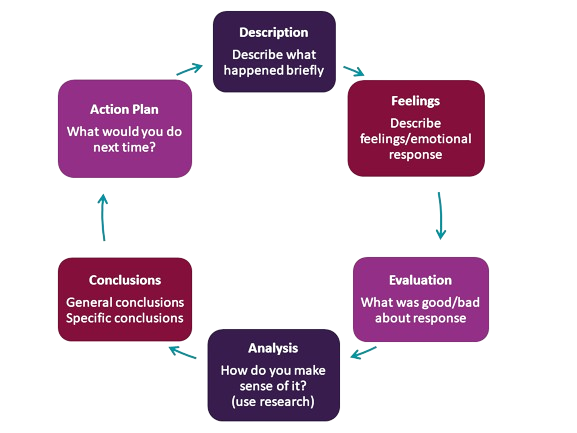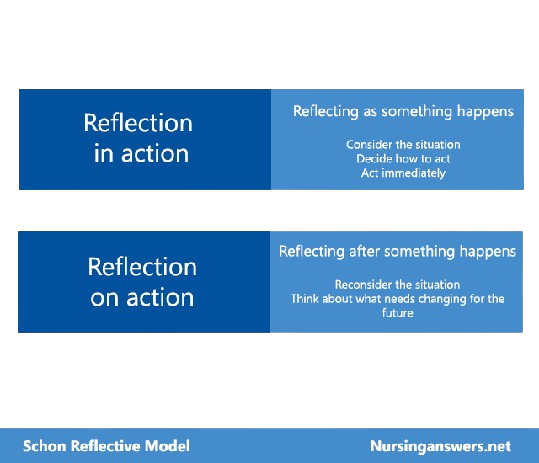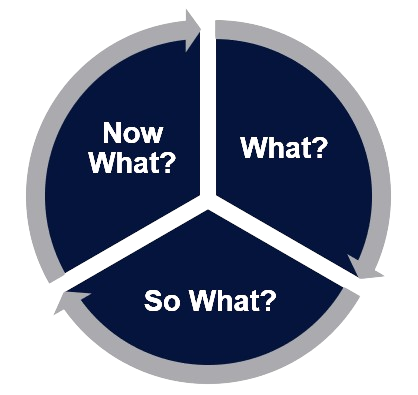
How to Use Journaling for Anger Management
Contents
Introduction
Journaling is a powerful tool for managing emotions, particularly anger. By putting your thoughts and feelings on paper, you gain a deeper understanding of the triggers behind your anger and how it affects your life. This process not only helps in identifying patterns but also provides a constructive outlet for expressing emotions. Over time, regular journaling can lead to better emotional regulation and a more balanced approach to dealing with anger.
We’ll explore the basics of using journaling for anger management, including practical tips and techniques to help you harness the power of writing.
What Is an Anger Management Journal?
An anger management journal is a dedicated tool for those having a hard time in dealing with anger, particularly useful during stressful events like job changes, relocations, or personal losses. It provides a structured way to manage anger, especially for those experiencing chronic and uncontrollable episodes that may impact their well-being.
Writing in a journal helps counteract the cognitive “fog” associated with anger, enabling clearer thinking and emotional regulation. It offers a way to process and understand anger more effectively. There isn’t one “right” way to create an anger management journal. However, there are three important components for optimal effectiveness and eventual peace of mind:
Components of an Effective Anger Management Journal:
- Acknowledgement: Identify the triggers, such as specific people, situations, or events, and document your emotional and physical responses. This detailed account provides clarity on what caused your anger and how it affected you, promoting self-awareness and personal growth.
- Self-Compassion: Practice kindness towards yourself by recognizing that anger is a normal human emotion and part of the learning process. Reflect on your experiences with compassion, allowing yourself to forgive mistakes and reduce self-blame, which aids in breaking the cycle of anger and regret.
- Mindful/Thoughtful Action: Evaluate alternative ways you could have reacted and develop coping strategies for future occurrences. This involves planning constructive responses and noting improvements, providing closure and helping you manage anger more effectively moving forward.
How to Identify Anger Triggers through Journaling?
- Record Specific Events: Write down the exact situations or interactions that provoked your anger. Include details such as time, place, and people involved to pinpoint what specifically triggered your emotional response.
- Describe Emotional Reactions: Note your immediate feelings and physical sensations during the anger episode. Pay attention to patterns, such as feeling tense or overwhelmed, which can help you understand common triggers.
- Reflect on Patterns: Review your journal entries over time to identify recurring themes or situations that frequently cause anger. This pattern recognition can help you anticipate and address triggers before they escalate.
- Assess Underlying Issues: Consider any underlying issues or unresolved problems that may contribute to your anger. Journaling can reveal deeper emotional conflicts or stressors that consistently trigger your reactions.
- Evaluate Responses: Reflect on how you responded to these triggers and whether your reactions were proportional. Understanding your response patterns can guide you in developing healthier coping strategies.
Benefits of Journaling for Managing Anger
| Benefit | Description |
| Emotional Clarity | Journaling helps you articulate and pinpoint the exact emotions and situations that trigger your anger. By clarifying these elements, you gain better insight into your emotional responses. |
| Stress Relief | Writing about your feelings provides a therapeutic release for bottled-up emotions, which can lower overall stress levels and prevent anger from escalating. |
| Improved Self-Awareness | Regular reflection through journaling enhances self-awareness by highlighting recurring patterns in your anger, such as common triggers or emotional responses, leading to greater self-understanding. |
| Problem-Solving Skills | By documenting your anger experiences, you can analyze situations and develop actionable strategies to handle similar situations more effectively in the future. |
| Increased Mindfulness | Journaling encourages mindfulness by requiring you to pause and reflect on your emotions and reactions, helping you become more aware of anger as it arises and manage it more proactively. |
| Track Progress | Keeping a journal allows you to monitor changes in your emotional patterns and responses over time, making it easier to see progress and areas that still need improvement. |
How to Start Your Anger Journal?
Step 1: Choose Your Medium
- Digital Platform: Offers convenience and accessibility.
- Physical Notebook: Allows for more personal expression.
Step 2: Set a Routine
- Decide when and how often you will write.
- Consistency is Key: Choose a time that works best for you, such as before bed or after a triggering event.
Step 3: Create a Structure
Outline sections to include in each entry:
- Date and Time: Track patterns over time.
- Trigger: Note what specifically caused your anger.
- Emotional Response: Describe how you felt (e.g., frustrated, enraged).
- Physical Response: Record any physical reactions (e.g., tense muscles, increased heart rate).
- Thoughts: Reflect on what was going through your mind.
- Actions Taken: Document how you responded or acted in the situation.
Step 4: Reflect on Triggers
- Regular Review: Regularly review your entries to identify common triggers. This helps in understanding patterns and uncovering underlying issues.
- Practice Self-Compassion: Be kind to yourself as you write. Recognize that anger is a normal emotion and use your journal to learn and grow rather than judge yourself harshly.
- Develop Coping Strategies: After reflecting on your entries, brainstorm and note down alternative responses or coping strategies for future situations. This helps in managing your anger more constructively.
Step 5: Review and Adjust
- Periodically review your journal entries and coping strategies.
- Continuous Improvement: Assess what’s working and what needs adjustment for ongoing personal development.
Models For Reflective Practice

Gibbs’ Reflective Cycle
Gibbs’ Reflective Cycle, developed by Graham Gibbs in 1988, is a widely used framework for reflection. It is particularly helpful for those seeking to systematically think through experiences, whether positive or negative, to learn from them and improve future practice. Gibbs’ model is a popular framework that guides you through six stages to reflect on experiences:
Description: What happened?
Feelings: What were your thoughts and feelings during the experience?
Evaluation: What was good and bad about the experience?
Analysis: Why did things happen the way they did?
Conclusion: What have you learned from the experience?
Action Plan: How will you act differently in the future based on this learning?
Image Source: libguides.hull.ac.uk

Kolb’s Experiential Learning Cycle
Kolb’s Experiential Learning Cycle, developed by David Kolb in 1984, is a model that emphasizes learning through experience. It outlines a continuous process where knowledge is created through the transformation of experience. This model is particularly useful in helping individuals understand how they learn best by connecting experiences with concepts and applying what they’ve learned in real-life situations. Kolb’s model emphasizes learning through experience and consists of four stages:
Concrete Experience: Having a specific experience.
Reflective Observation: Reflecting on that experience from different perspectives.
Abstract Conceptualization: Drawing conclusions and learning from the experience.
Active Experimentation: Applying what you’ve learned to new situations.
Image Source: libguides.hull.ac.uk

Schön’s Reflective Practice
Donald Schön introduced the concept of reflective practice in the 1980s, focusing on the idea that professionals learn and develop through reflecting on their experiences. Schön’s model is particularly valuable in dynamic and complex fields where quick thinking and adaptability are crucial. He differentiates between two types of reflection: reflection-in-action and reflection-on-action, both of which help practitioners continuously improve their skills and decision-making processes. Schön introduced two types of reflection:
Reflection-in-Action: Thinking about what you’re doing while you’re doing it and making adjustments on the spot.
Reflection-on-Action: Thinking back on what you’ve done after the event to understand and improve future practice.
Image Source: nursinganswers.net

Driscoll’s Model of Reflection
Driscoll’s Model of Reflection, based on the work of John Driscoll, is a simple yet effective framework for reflecting on experiences. It is often referred to as the “What?” model because it revolves around three key questions: “What?”, “So What?”, and “Now What?”. This model is particularly useful for those who prefer a straightforward approach to reflection, making it easy to quickly analyze experiences and determine actions for improvement.
Driscoll’s model is straightforward and based on three questions:
What? – Describe the experience.
So What? – Analyze the importance and implications of the experience.
Now What? – Decide on the actions you’ll take in the future based on what you’ve learned.
Image Source: app-ldnedu-infra-teaching-liv.azurewebsites.net
Effective Techniques for Journaling About Anger
- Detail Specific Triggers: Describe the exact events that triggered your anger. Example: “I got upset when my friend canceled plans at the last minute after I’d rearranged my schedule.”
- Describe Your Reactions: Note your emotional and physical responses. Example: “I felt frustration and my face grew hot when my project was criticized. My hands also shook.”
- Explore Underlying Feelings: Reflect on deeper emotions contributing to your anger. Example: “My irritation was intensified by feeling overwhelmed and unsupported at work.”
- Record Physical Sensations: Document physical symptoms like tension or headaches. Example: “I had chest tightness and a headache after arguing with my partner.”
- Reflect on Your Thoughts: Analyze thoughts during and after the anger episode. Example: “I thought, ‘I’m always ignored,’ which fueled my anger.”
- Write About Possible Solutions: Brainstorm strategies to manage or prevent anger. Example: “I’ll use deep breathing and communicate assertively to manage future situations.”
- Review and Reflect: Periodically review your notes to spot patterns and track progress. Example: “I noticed work stress is a frequent trigger. I’ll improve my work-life balance and seek support.”
- 5 Anger Journal Prompts:
- Describe a Recent Situation That Triggered Your Anger: Reflect on what happened, who was involved, and how you felt during the incident.
- Identify the Underlying Emotion Behind Your Anger: Explore if there were other emotions like hurt, fear, or frustration beneath your anger.
- Consider How You Responded: Did your reaction align with how you wanted to respond? What would you change about your response if you could go back?
- Reflect on the Consequences: What were the short-term and long-term effects of your anger? How did it impact your relationships, work, or well-being?
- Set an Intention for the Future: Based on your reflection, what steps will you take to manage your anger more effectively next time?
Tips for Staying Consistent with Journaling
- Set a Specific Time: Establish a daily routine by choosing a specific time for journaling. This could be first thing in the morning to set a positive tone for the day, or in the evening as a way to unwind and reflect. For example, you might decide to write every morning right after breakfast, making it a natural part of your routine.
- Start Small: Avoid overwhelming yourself by beginning with a small, achievable goal. Start with just 5 minutes of writing each day. You could focus on a single thought, event, or emotion, which helps in building the habit without feeling pressured to produce lengthy entries.
- Create a Comfortable Space: Make journaling a pleasant experience by creating a dedicated, cozy space. Set up a small writing desk in a quiet corner of your room with a comfortable chair and good lighting. Adding personal touches, like favorite pens or a nice journal, can make the space inviting and enjoyable.
- Use Prompts: If you struggle with what to write, journal prompts can be a helpful guide. These prompts can spark creativity and provide direction. For example, use a prompt like “Describe a recent challenge and how you overcame it,” which can help you explore your experiences and reflections more deeply.
- Track Your Progress: Keeping track of your journaling habit can enhance motivation and accountability. Use a calendar or habit-tracking app to mark off the days you journal. This visual representation of your consistency can be a powerful reminder of your commitment and progress.
Conclusion
Journaling offers a valuable tool for managing anger by helping you understand triggers, emotional responses, and underlying issues. By regularly documenting your experiences and reflecting on patterns, you can develop effective coping strategies and enhance self-awareness. Consistent journaling promotes emotional clarity and provides a constructive outlet for your feelings. Embrace this practice to gain better control over your anger and foster personal growth.
References
- Smith, J. A., & Brown, L. M. (2020). Understanding anger: Theories and management strategies. Journal of Emotional Health, 15(2), 45-58.
- Johnson, P. R. (2019). The role of journaling in emotional regulation. Emotional Wellness Review, 22(4), 87-94.
- Lee, C., & Anderson, K. T. (2018). Practical techniques for anger management. Clinical Psychology Journal, 34(1), 112-129.
- Miller, R. D. (2017). Cognitive-behavioral approaches to anger control. Behavioral Science, 29(3), 201-215.
- Taylor, S. W., & Green, M. (2016). Exploring emotional triggers: A practical guide. Journal of Psychological Research, 19(5), 345-359.
- Garcia, L. (2021). Self-compassion and emotional healing: Techniques for managing anger. Journal of Therapy and Counseling, 30(6), 423-437.
- Peterson, E. J. (2020). Mindful strategies for effective anger management. Mindfulness and Therapy, 14(3), 154-168.
- Adams, R. F., & Nelson, J. (2018). The impact of journaling on emotional health. Behavioral Medicine, 45(2), 77-89.
- Carter, A., & White, J. (2017). The benefits of reflective writing for managing emotions. Journal of Applied Psychology, 42(4), 295-310.
- Hughes, M. L., & Wilson, T. (2019). Identifying and addressing emotional triggers through journaling. Emotional Intelligence Journal, 27(1), 122-136.









